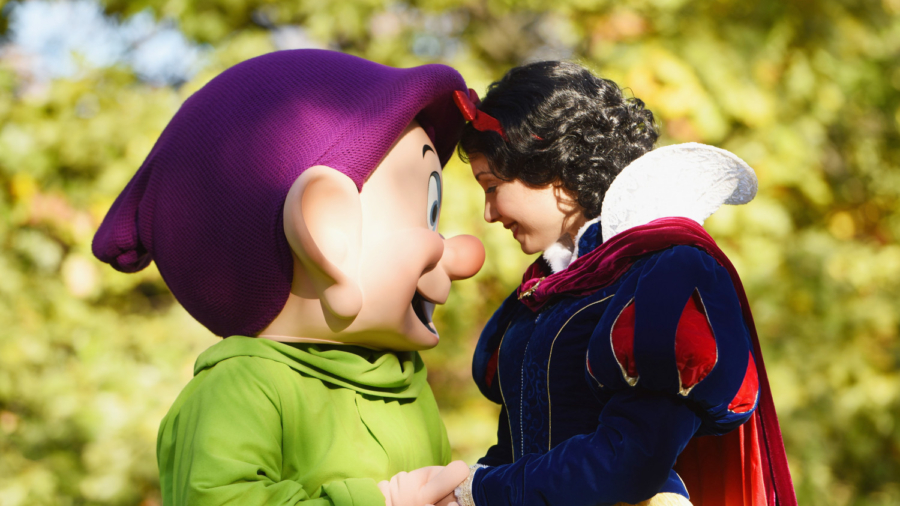An era in American animation history just ended. The last living Disney animator to have made significant contributions to the original animated features, Don Lusk, just died at the age of 105.
Lusk was there from the very beginning, starting with Walt Disney’s very first feature in 1937, Snow White and the Seven Dwarfs.
His prolific animation career began back in 1933, working on Mickey Mouse shorts. From 1933-60, he was one of the animators Walt Disney employed to work on short feature films and his output was staggering.
Of the 17 Disney features between Snow White and the Seven Dwarfs and 101 Dalmatians, Lusk worked as an animator on 13 of them. His pencil drawings brought to life Geppetto’s pet goldfish, Cleo, and pet tuxedo cat, Figaro, for Pinnocchio (1940), the Arabian Fish Dance for the “Nutcracker Suite” for Fantasia (1940), the dog chase for Bambi (1942), the mice in Cinderella (1950) and the title character floating down the rabbit hole in Alice in Wonderland (1951), according to The Hollywood Reporter.
Two of Disney’s famed “Nine Old Men” crew—animators Frank Thomas and Ollie Johnson—wrote in the 1981 book Disney Animation: The Illusion of Life about Lusk’s work on Fantasia: “The scenes of the glowing white fish in the Arabian Dance section of the ‘Nutcracker Suite’ amazed the whole studio. Never had any object on celluloid looked so diaphanous and delicate … No one had ever seen such a gossamer effect, and very few knew how it had been achieved.”
Lusk began as an “in-betweener”—those who filled in the action between key poses—on Goofy short films.
“He wasn’t easy. Goofy has too much detail on him,” he recalled, according to The Hollywood Reporter. Then he worked as a clean-up artist and helped Snow White and the Seven Dwarfs (1937) make deadline.
Other classics he’s worked on include Song of the South (1946), Peter Pan (1953), Lady and the Tramp (1955), and Sleeping Beauty (1959).
Going on Strike and Being Drafted
In 1941, Lusk was one of 334 employees who walked out on strike over working conditions at the studio, demanding a bump in salary from $87.50 a week, according to The Hollywood Reporter.
“I didn’t know what people at MGM or Warner Bros. were making but I know they were making more than we were,” Lusk told the Animation Guild in a 2013 interview.
He was one of a small number of strikers to have a long career at the Disney studio afterward, although his advancement opportunities were limited because of his participation in the strike, according to Cartoon Brew.
Shortly after returning to Disney from the strike, Lusk was drafted to serve as a Marine in World War II. He was assigned to the training film unit in Quantico, Virginia, where he spent a few years working alongside other established animation artists such as Carl Fallberg, Tom Codrick, and Pete Alvarado. After the war ended, he returned to the Disney studios and found his pay had increased to $125 a week, reported The Hollywood Reporter.
The strike did cause him to eventually be blacklisted. He managed to survive at the studio until 1960 when he drew puppies for 101 Dalmatians.
“I just barely got credit,” he said. “I think I was the next to last name.”
It was time to leave.
Post Disney
After leaving Disney, Lusk joined Bill Melendez Productions and animated such films as A Boy Named Charlie Brown (1969), Snoopy, Come Home (1972), and Race for Your Life, Charlier Brown (1977). He worked on 10 Peanuts primetime specials throughout the 1970s, including the enduring classic A Charlie Brown Thanksgiving.
However, he spent most of his post-Disney days at Hanna-Barbara, the studio where he said he was treated best and whose management he respected the most. There, he directed over 100 episodes of The Smurfs and dozens of other series including A Pup Named Scooby-Doo, Bill & Ted’s Excellent Adventures, Yo Yogi!, Gravedale High, Jonny Quest, The Flintstone Kids, Challenge of the GoBots, Captain Planet and the Planeteers, Snorts, and The 13 Ghosts of Scooby-Doo.
In 1993, he retired from the animation industry at the age of 80.
He was nominated twice for Daytime Emmys for his work on The Smurfs in 1988 and 1989, and again in 1999 for A Pup Named Scooby-Doo.
In 2014, Lusk received the Winsor McCay lifetime achievement Award at the Annies.
Born in Burbank, California on Oct. 28, 1913, Lusk died Dec. 30, 2018, at a retirement home in San Clemente, California.
As Disney conceptual artist Mike Peraza wrote in a Facebook post: “He was the last living animator from the Golden Age of the Walt Disney Company … as with so many animation veterans, [Lusk] was as talented [and he was] as he was generous to others with his advice and help over the years. He will be missed but his wonderful work will live on.”
Very sad to report that our good friend Don has passed on. He was the last living animator from the Golden Age of the…
由 Mike Peraza 发布于 2018年12月30日周日
Lusk is survived by his son Skip and daughter Marilyn; grandchildren Jason and Erica; and great-grandchildren Kyler, Catalina, Conner, and Kayla.
Watch Next:
How They Brainwash You: Government, Media, and Special Interest Group Tactics
A false reality is being painted by news outlets, governments, activists, and special interest groups that is warping psychology and concepts.

